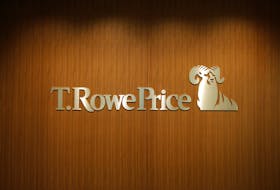Guaranteed Investment Certificates are like the nice guys of the investment family. They are safe, steady and you can count on them when your other investments go south. But when it comes to offering big returns, like nice guys, GICs often finish last. In today's historically low interest rate environment, more Canadians are shunning GICs as an investment. Canada's GIC market has fallen from peak volumes in 2008, and after rising about five per cent annually since 2004, according to a report from Toronto-based consultancy Idea Associates. The report says GICs were as valued at just under $900 billion in the first quarter of this year, down four per cent from 2008. John Bennett, an independent financial services industry consultant, said the GIC market surged last fall when tanking markets sent investors scrambling for safety. But as interest rates started dropping off to spur business and consumer spending, investors turned their backs on GICs. "I think the sense of fear has subsided," Bennett said. "But that doesn't mean they've gone back into equities." In fact, Scotiabank released a report recently showing Canadian households are sitting on up to $1 trillion of cash and near-cash holdings, earning almost no interest. GICs offer a guaranteed rate of return over a fixed period of time. However, because they are low risk, the return is often lower than other investments such as stocks, mutual funds or income trusts. While GIC rates are all over the map, depending on the type of investment you buy, a standard, non-redeemable, five-year GIC today offers a return of around two per cent. That is less than half of the return an investor could have received a year ago. Accountant and author David Trahair said while GICs rate are now at their lowest levels, ever, the good news is that they can only rise from here. What's more, Trahair said investing in GICs at a low rate is safer than risking losing money in stocks. "A lot of people are interested in getting to safety after losing 30 per cent or more of what they had (in the recent stock market crash)," said Trahair, who recently released the book "Enough Bull - How to Retire Well Without the Stock Market, Mutual Funds, or Even an Investment Adviser." He also likes GICs because they are simple and easy to understand, unlike some other investments that have caught investors off guard in recent years. For instance, income trusts were thought to be a solid investment with steady distributions and low tax rates. However, holders were stung in 2006 when Ottawa said it would start taxing trusts like corporations beginning in 2011. There is also the asset-backed commercial paper investment, which many people bought not understanding what they were getting and believing they were as safe as a GIC. That market collapsed in 2007 as a result of the credit crunch. "Most people look at their RRSP investment and don't understand half of the things that are on there," said Trahair. "Why bother taking the risk of choosing the right mutual fund when there's a safer alternative?" GIC critics point to the investment's higher tax rate as a problem, along with low returns, especially with rising inflation. But Trahair said putting GICs in RRSP accounts or the new Tax-Free Savings Account (TFSA) are a good way to avoid the higher taxes. As for GICs not returning enough to counter inflation, Trahair calls that criticism "a red herring." "Inflation, in my mind, affects your spending. It should have nothing to do with your investing," he said. Bill Ritchie, president of Victoria-based GICDirect, a GIC broker, recommends laddering as a good strategy for GIC investments. It's basically a way of diversifying your GICs by putting them in a mix of short and long-term investment. For instance, if you had $50,000 to invest, you put $10,000 in a one-year GIC, another $10,000 in a two-year GIC and so on over five years. Ritchie said it's a good way to potentially maximize returns and reduce your portfolio's sensitivity to interest-rate changes. Ritchie GICs are the perfect investment if you are totally risk averse and don't want any volatility. It's also good if you have a specific time frame for your money, for instance you plan to buy a house in two years and want to ensure the money will be there. "It all comes back to a person's individual goals," said Ritchie. While GICs are a good investment for individual portfolios, Ritchie said big and small companies also use them to keep their money secure. The Idea Associates report says businesses account for about 43 per cent of outstanding GIC balances, while 57 per cent are for individual investors. On average, the report says business holdings grew at an average of 5.5 per cent since 2005, compared to 3.4 per cent for individual holdings. About 67 per cent of total GICs, or about $600 billion in 2009, are placed with banks, the report shows. Meantime, credit unions have about 25 per cent of the GIC market and trust companies about seven per cent.
GICs the safe investment bet despite taxes, inflation risks, experts say
None
STORY CONTINUES BELOW THESE SALTWIRE VIDEOS
Two youths charged with second degree murder | SaltWire #newsupdate #halifax #police #newstoday








